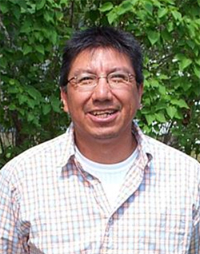|
RAPAPORT... This holiday season, when more diamonds are sold in America (United States) than any other time of year, the Hollywood movie Blood Diamond is causing many people to reevaluate purchasing ‘conflict diamonds.’
They will be looking to buy diamonds from other places in the world where responsible companies are treating local people and the environment fairly and responsibly.
And mining companies will be trying to sell them diamonds from Canada.

Alvin Fiddler
Deputy Grand Chief
Nishnawbe Aski Nation
|
Unfortunately, many Canadian diamonds are anything but conflict-free; ongoing aboriginal rights and environmental concerns should make consumers think twice before purchasing a Canadian diamond, too.
Nishnawbe Aski Nation, which means the people and the land, represents some 45,000 Cree and Ojibway people scattered across 49 communities in Canada's Boreal Forest—the world’s largest intact ecosystem and Earth’s last line of defense against global warming. At 1.4 billion acres, the Canadian Boreal Forest is one of the largest unspoiled forest ecosystems remaining on Earth, a mosaic of interconnected forest and wetland ecosystems, teeming with birds, fish, plants, and animal life. Canada’s Boreal Forest is also a potential treasure chest of timber, oil and gas, and minerals, including diamonds and is under heavy development pressure. At present, less than 10 percent of the Boreal is protected from industrial development.
Unless something changes, corporations will carve it up without regard to the impacts to the people or the environment. While few American’s have ever heard of the Nishnawbe Aski Nation or the Boreal Forest, scientists will tell them what the peoples that live there already know: It is critical to the earth in so many ways, and must be protected. The Nishnawbe Aski Nation, along with many other First Nation communities throughout the great Boreal Forest have been in the grip of a diamond exploration boom led by companies like De Beers. That and other intensive resource development is causing environmental devastation. A complicit Canadian government seems to be turning a blind eye. We need and welcome responsible resource development, but with an emphasis on the word responsible. The Nishnawbe Aski Nation communities are among the poorest in the world, ranked 69th in the U.N.'s Human Development Index, with the lowest life expectancy in Canada, the highest youth suicide rates in the world, and an unemployment rate of more than 60 percent. With diamonds on our lands our communities should be wealthy. Instead the hunt for theses rare gems from the heart of the Earth has meant only conflict and strife for us. De Beers plans to develop massive open pit diamond mining projects in our traditional territory but it is not honoring our treaty rights or working with us to win our consent for the projects. Their army of airplanes, helicopters and claim stakers has been trespassing on the traditional lands of many of our communities, despite our calls for moratoriums on diamond exploration. The link between diamond exploration and aboriginal and treaty rights violations fits the pattern of diamond conflicts in Africa. In those former European colonies, the scramble for control of diamond mining territory has helped to fuel a cycle of conflict. Will the cycle be repeated in our lands too? Before they can claim to have done the right thing in Canada, De Beers and other Canadian diamond mining companies must demonstrate a different attitude and pattern of behavior. They must allow us to determine where, when and how diamond mining will take place, if at all. They must also work with us and the Canadian governments to protect the great Boreal Forest ecosystem and make sure it continues to provide clean air, clean water and abundant wildlife for our communities and for the world. The battle over diamonds will be largely fought in the United States, where annual sales of diamond jewelry represent almost half of the $55 billion sold world wide. The time is now for consumers in the United States to connect the dots and weigh in. Tell De Beers, other diamond miners and Canada that unless things change, Canadian diamonds are no better than conflict diamonds from Africa. Alvin Fiddler
Deputy Grand Chief
Nishnawbe Aski Nation
www.nan.on.ca
|